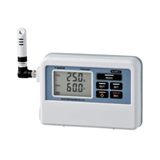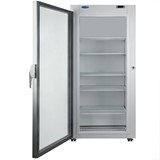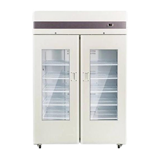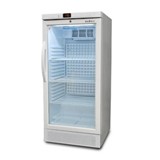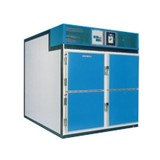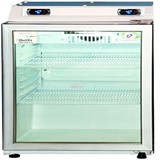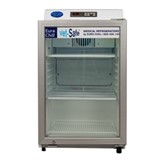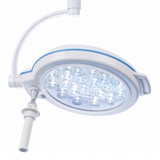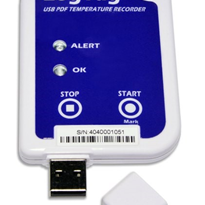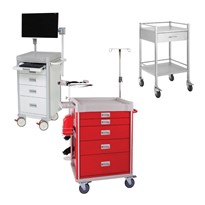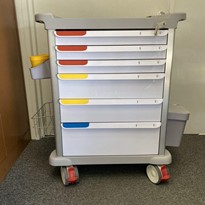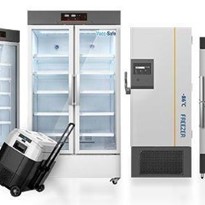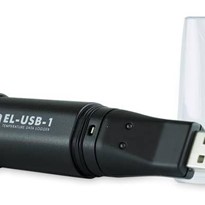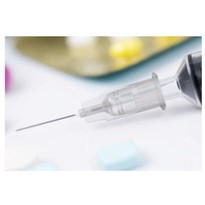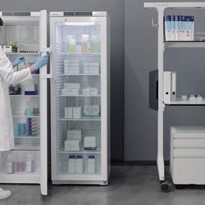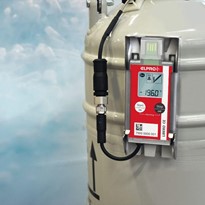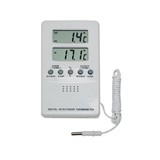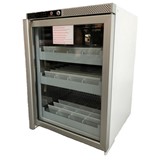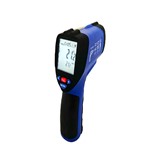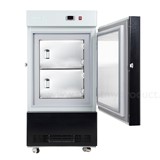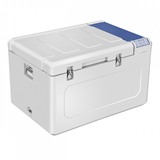Medical fridges need to be checked every day as medicines and vaccines are highly sensitive to temperature fluctuations. The fridge temperature should read between 2 to 8°C, and the ambient temperature no greater than 25°C. How often to check the temperature per day depends on the type of medication, refrigeration usage, and industry guidelines. In this article, we discuss the importance of checking medication fridge temperature, how often to check, and procedures.
Medication Fridge Temperature Requirements
Medical fridges must be in the temperature range of 2 to 8°C to maintain the efficacy and safety of medicines, vaccines and biological samples. They require strict storage guidelines, as they are less effective if exposed to temperatures outside these perimeters. Exposure to temperatures higher than 8°C or lower than 2°C is called a cold chain breach. Sensitive medications and biological products may lose their potency and need to be destroyed if the breach lasts more than 15 minutes.
Factors Affecting Medication Fridge Temperature
Temperature fluctuations can occur in a medical fridge for various reasons, from frequent opening of the door to a power outage. Understanding these factors is essential to identifying potential risks that can impact the temperature of medical fridges. Below is the list of reasons a medical fridge temperature may fluctuate.
-
Opening and closing of the fridge door. Frequent opening and closing of the fridge door is likely to cause temperature fluctuations. Every time the door is opened, warm air enters the fridge and cold air escapes, causing the temperature to rise.
-
Ambient temperature. Ambient temperature is the room temperature around the fridge and medical fridges are designed to be indoors with an ambient temperature no higher than 30°C. The ideal ambient temperature is 20-25°C to ensure the optimum efficiency of the appliance. Without this ambient temperature, the medical fridge may find it hard to maintain its temperature settings of 2 to 8°C, which will impact safe storage of medications.
-
Poor ventilation. A medical fridge must be placed with adequate ventilation around it. As a general rule that means 10 cm around the sides, back and top of the fridge. Inadequate ventilation prevents the fridge compressor from working properly, causing it to overheat which may impact the fridge's efficiency.
-
Fridge is too crowded. Medicines and vaccines that are overcrowded on fridge shelves will prevent air circulation in the fridge and lead to uneven air distribution. Sensitive vaccines must be stored on shelves with the most stable temperatures with adequate space around them.
-
Power outage/interruption. In the event of a power outage or interruption, the temperature is held for less than 30 minutes. This means there must be a backup power supply or alternative cold storage facility to transport the medications and biological samples to before they deteriorate.
-
Fridge exposed to direct sunlight or heat. If a medical fridge is exposed to direct sunlight or heat, it will cause the fridge casing to overheat which will raise the internal temperature of the fridge, potentially resulting in a cold chain breach. Fridges must be kept out of continuous direct sunlight, and other heat sources from heat pumps, radiators and heaters.
-
Seal and gasket problems. Seals and gaskets are important for temperature regulation. Without a door that seals properly, cold air will escape and warm ambient air will enter the fridge, causing temperature fluctuations.
-
Unstable fridge placement. If the fridge is placed on an unstable surface, the doors may stay open, causing temperature fluctuations. Unstable placement can also result in uneven distribution of cool air inside the compartment.
Factors Affecting Frequency of Medication Fridge Temperature Checks
The basic guidelines of daily medical fridge temperature monitoring are a good foundation for temperature control. However, there are some other factors that can impact how often a medical fridge temperature should be checked.
-
Type of medication. For most medications, vaccines and biological samples, it is important to monitor the temperature twice a day. If the medication is particularly sensitive, temperature checking may need to be more regularly, at minimum two to three times a day.
-
Historical data. A record of temperature checks will indicate how well the fridge is performing at regulating temperature to be within the cold chain guidelines. By analysing the historical data, you can deduct how stable the temperature has been. If showing signs of instability, more frequent temperature monitoring is recommended.
-
Fridge age. A new fridge is likely to have new technology and may not need to be checked as often, although checks must always be done at least once a day. On the other hand, an older fridge or one that is not well maintained, will need more frequent temperature checks.
-
Fridge location. If the medical fridge is placed in a location with direct heat or sunlight, or inadequate ventilation, more regular temperature checks will need to be carried out. The fridge location can have a significant impact on medical fridge temperature stability.
-
Regulatory requirements. Regulatory requirements state that medical fridges must have temperature monitoring manually recorded at least once a day. However, more regular temperature checks may be required depending on contributing factors.
Methods for Monitoring Medication Fridge Temperature
Making sure the medical fridge temperature remains at a stable and suitable level is an important task. These are the best methods to monitor medical fridge temperatures to ensure the safety of temperature sensitive medications.
-
Manual monitoring.
Staff members are generally assigned to regularly check the medical fridge temperature. Usually, this will be twice a day, morning and evening (unless circumstances require more frequent monitoring). The staff member records the current, minimum and maximum temperature readings on a specific booklet or excel spreadsheet and must be diligent with the temperature monitoring and record keeping to be effective. If the readings fall below or rise above the cold chain requirement, they must react immediately.
To manually check the temperature in a medical fridge requires a HACCP approved thermometer or temperature sensor with a real-time display. It is recommended that thermometers be placed in an area that is easy to access. The thermometers have built-in alarms and are calibrated to maintain temperatures between 2 and 8°C. Manual monitoring is an accurate way to gauge the medical fridge temperature in real time.
-
Digital monitoring.
There are two methods of digital monitoring, one with a basic data logger, and the other with fully automatic cloud connected loggers. These data loggers electronically record temperature readings at set intervals.
-Basic Data Logger: These semi-automatic data loggers continually monitor the temperature in the medical fridge for a predetermined period of time. The recorded data is then downloaded onto a computer for analysis. This method offers a balance between fully automated and manual monitoring. The readings are logged on a regular basis but without manual intervention, apart from downloading to the computer. It is excellent for record keeping purposes and historical data. Twice daily manual readings are still recommended as backup monitoring.
-Fully Automated Data Loggers: Fully automated cloud connected data loggers are the epitome of technological advancement for medical fridge monitoring. These WiFi data loggers connect to the cloud and record temperature data every 5 to 10 minutes. They provide real time alerts should medical fridge temperature fluctuate. Alerts are sent via sms, email, or phone calls, which helps ensure any temperature breaches are addressed immediately.
Best Practices to Maintain a Safe Medical Fridge Temperature
Temperature stability is essential for a medical fridge that stores fragile and temperature sensitive medicines, vaccines and biological products. To maintain a safe medical fridge temperature, follow these practices.
-
Regular temperature check. With a thermometer, record the minimum and maximum temperature twice a day at the same time. If the temperature is outside the recommended range, implement cold chain breach protocols.
-
Reset the minimum/maximum thermometer after reading. Be sure to reset the thermometer after reading. Usually this is just a matter of pressing the hi/lo button until it beeps to reset.
-
Check the temperature every time the fridge is opened. Check the temperature when opening the door as this can cause fluctuations. It does not need to be logged but is a safety precaution.
-
Use a temperature data logger. Data loggers record temperature every 5 to 10 minutes and alert immediately of any temperature variations or breaches.
-
Record events e.g. deliveries on temperature monitoring charts. Include any events that happen on the monitoring chart. This could be a slight power surge or outage, a vaccine delivery, servicing or maintenance. This information is useful should any temperature breach occur to trace back to potential causes.
-
Follow cold chain protocol if necessary. A cold chain breach report needs to be filled out in the event of a breach when medications or vaccines have been exposed to temperatures higher than 8°C and lower than 2°C.
-
Keep the fridge clean. Regularly wipe down the fridge and make sure the medicines are not overly crowded. Keeping the fridge clean and organised will help its efficiency.
-
Annual servicing. Regular servicing and calibration will help keep ahead of any potential issues that may cause the medical fridge to not work at its optimum capability.
-
Train staff not to open the door too frequently. Ensure staff is educated about not opening the fridge door too frequently. This will help ensure medical fridge temperature regulation and avoid any cold chain issues.
It is essential to regularly check the temperature of medical fridges to make sure they are supplying a suitable environment for sensitive medications and biological samples. The temperature of the medical fridge should be checked at least twice a day, morning and evening. In this article we explain how to check medication fridge temperature and best practices to maintain safe temperature for medications. For further information, contact the experts in cold storage, Eurochill.


